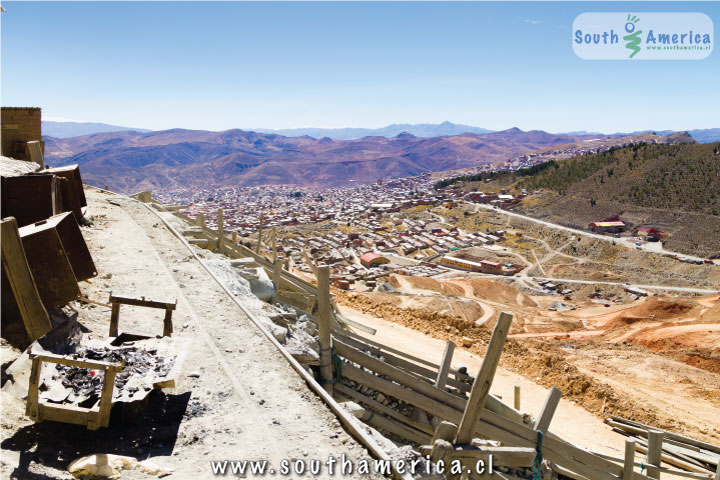Potosi
Bolivia

This city was once the star of South America and fed the hungry lust of the Spaniards who came in all their glory to conquer the land. Here in Potosí they discovered the world's largest silver deposits. This inhospitable area on top of a mountainside thus became the sight for what was one of the most important cities of the colonial ages throughout all of the Americas. It is the highest city (not town) in the world at over 4,000 meters above sea level.
Today the city has become something of a living ghost town, where people continue to live in this inhospitable land and even continue to mine for the scraps left behind. The tin that is currently mined in the area is practically worthless. There are still signs throughout the city of the two centuries in which Potosí dominated as a power in South America. This city that was constructed at great heights is now crumbling around the locals, many of whom still dress in the traditional clothing.
Potosi lies between the Salar de Uyuni and Sucre, making it an easy place to stop along your travels in Bolivia.
Be sure to bring warm clothing with you, night's can be incredibly cold at the high altitude, in winter the temperature can go below negative 30 °C.
What to Do
We recommend spending a bit of time in the high altitude acclimating yourself to the area before going to visit the mines, even if there isn't much to do in the city but check out colonial churches.
Casa Real de la Moneda: A tour of this former mint, now museum, takes about three hours in all. The building is considered by many to be the most important construction during the colonial period in all of South America. It houses the machinery used to make the silver into coins, artifacts from before the time of the Spaniards, religious art and other items of interest. This is the city's star attraction and is well worth the visit.
Lagunas: There are several manmade lagoons that were dug out by slaves during the colonial period in order to provide the city with water, including water needed for the mining industry. It is possible to take a half or full day tour with one of the travel agencies in the area, or do some trekking there on your own.
Churches: Most of the churches in Potosí are generally closed to the public, or open only for limited hours each week. However, there are so many that as you walk along the streets of the city be sure to try each of them out, if the doors are open you just might be in for an interesting treat.
The Mine Cerro Rico: Sadly, today the mines are still open and functioning, much in the same way that they did during the colonial period. New technology has not been brought in, and miners burrow down into the last of the 5000 shafts in search of remains that were left behind by the Spaniards. You can take a tour up to these mines and meet these men who work such a dangerous job that they consider it to be their own death sentence.
The tour itself is incredibly cheap, but it is recommended that you bring along a little extra as a donation, and perhaps a gift of some kind to the miners such as a bag of coca leaves.
We also recommend taking a mask or something to cover your mouth while walking/creeping through the mine.
Of course wear your worst clothes into the mine, and be very careful, those with asthma or other medical conditions should not enter the mine.
If you found this guide about Potosi, Bolivia interesting or useful, let others know about it.


